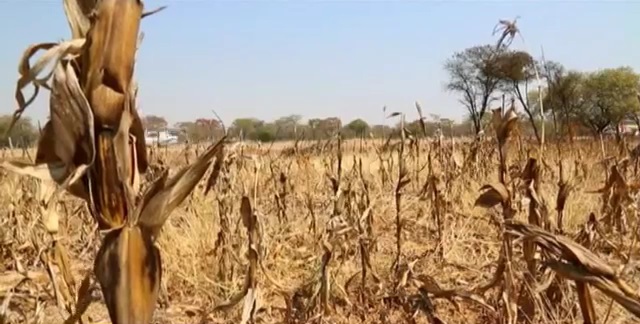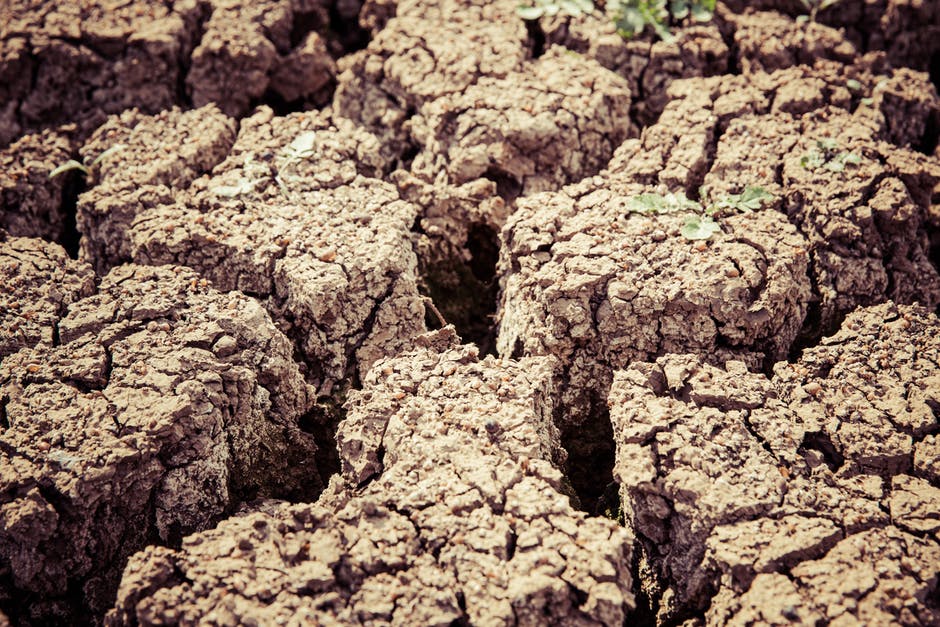
Drought is a phenomenon where there’s abnormally low rainfalls than usual resulting in dry conditions. Atmospheric disturbances result in droughts.
Drought is most dire among poor societies than rich ones. Poor countries fail to shield themselves against droughts and often rely on food aids. Drought becomes a disaster when the level of coping is very low. Countries with frequent droughts are found in Africa especially the Sahel and Saharan regions eg. Ethiopia, Somalia, Mali, Algeria, Chad, Sudan and many others. Poverty makes droughts a disaster in these regions.
Factors Affecting Atmospheric Distirbances
Climate Change
Climate change can be long or short term with short term changes such as El nino causing very noticeable droughts. The abnormal heating of S.E Pacific causes torrential rainfalls in that vicinity while the rest of S.W Pacific (East Australasia) experiences high temperatures and very low rainfalls. The Indian subcontinent monsoon delays and Africa, especially Sub Saharan Africa, also experiences dry conditions.
Volcanic Eruptions
Super Volcanic eruptions are known to alter atmospheric conditions. Ash and cinders ejected high in the troposphere can block incoming sunlight resulting in low temperatures, thus less heat to lift air parcels aloft resulting in low rainfalls. The 1885 Mt. Tambora (Indonesia) eruption resulted in “The Year Without Summer” the following year. Low temperatures and rainfalls where experienced across the globe especially Europe and Asia.
Anthropogenic Causes
Humans can significantly alter the atmosphere with extreme gas emissions from vehicles and industries enhancing the greenhouse resulting in global warming. Global warming has been on the rise since the Industrial Revolution causing abnormally low rainfalls, especially where gas emissions are rampant. This global warming can exacerbate heating in S.E Pacific resulting in El Nino.
Global warming can reduce water bodies such as lakes limiting moisture supply to air parcels and, therefore less rainfall.
Deforestation
Another human cause of drought, deforestation results in high Co2 concentrations in the atmosphere since trees absorb it enhancing the greenhouse, thus leading to global warming. In addition, without vegetation evapotranspiration, thus moisture and rainfall is reduced.
Some factors can cause droughts on a wide area while others such as deforestation can cause local droughts. For example, a local village can experience drought while other areas in the same country flourish with rainfall. This can be because deforestation and gases are concentrated there limiting rainfall supply than other areas.
Effects
Environment
Drought has adverse effects both to the environment and animals. Most noticeable effects are poor crop yields resulting in starvation and famines.
Both animals and humans that depend on those yields perish.
Water bodies and groundwater supplies are reduced.
Brush/wild fires are rampant due to the complete dryness of vegetation making it susceptible to minor ignitions such as cigars or sparks.
Desertification
 source: pexels
source: pexelsDry areas intensify they dryness and can spread to other areas not perceived as dry. Frequent Droughts in the Sahel region of Africa results in intense famines, wars, diseases and death.
Social Impact
Hot droughts are known to cause heat waves which impacts people’s health causing skin cancers, rashes e.t.c.
Diseases such as malaria, dengue, sleeping sicknesses increase among people.
Poverty increases leading to high crime rates, begging, migration and many social problems.
Migration
Drought is one cause of migration as people flee from dry stricken areas to more greener pastures. Drought in the Sahel cause south movements to the tropics were rains are available. Nomads such as the Masai Mara migrate in search of fertile lands and water supply.
North Africans can migrate north to Europe crossing the Mediterranean Sea.
Political Impacts
Limited food supplies and fertile lands result in wars and hostilities.
Corrupt governments can limit or unevenly distribute food supplies.
Economic Impacts
Poor crop yields impact countries that depend on agricultural exports, e.g Zimbabwe’s tobacco, Ghana’s cocoa e.t.c. This has adverse effects on GDP and employment. Local people are pushed out of agriculture leading to other problems such as migration in search for jobs. Furthermore, majority of factories can close down and some can fail to open increasing employment.
Mitigation of Drought Effects
It is impossible or difficult to completely prevent drought or eliminate it, but mitigatory measures and preparedness prevents some of the dire impacts of droughts.
Preparation
- Climate monitoring using remote sensed data, time span of el-nino (3-5 years) e.t.c
- Domestic and National Storing of crop harvests and in times of surpluses.
Measures
- Implementing irrigation systems.
- Water harvesting
- Cloud seeding although unreliable and pollutes the environment
- Planting drought resistant crops e.g sorghum, millet etc
- Crop rotation to conserve soil health
- Building windbreaks (trees) that shelter plants/ crops from strong dust storms.
- Terracing slopes to reduce excess runoff and store water on flat steps
- Read More: Drought mitigation
